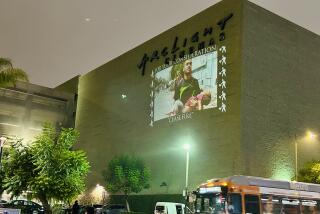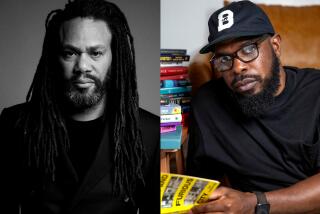The infamous blacklist changed Hollywood. A timely show tracing its history arrives at Skirball
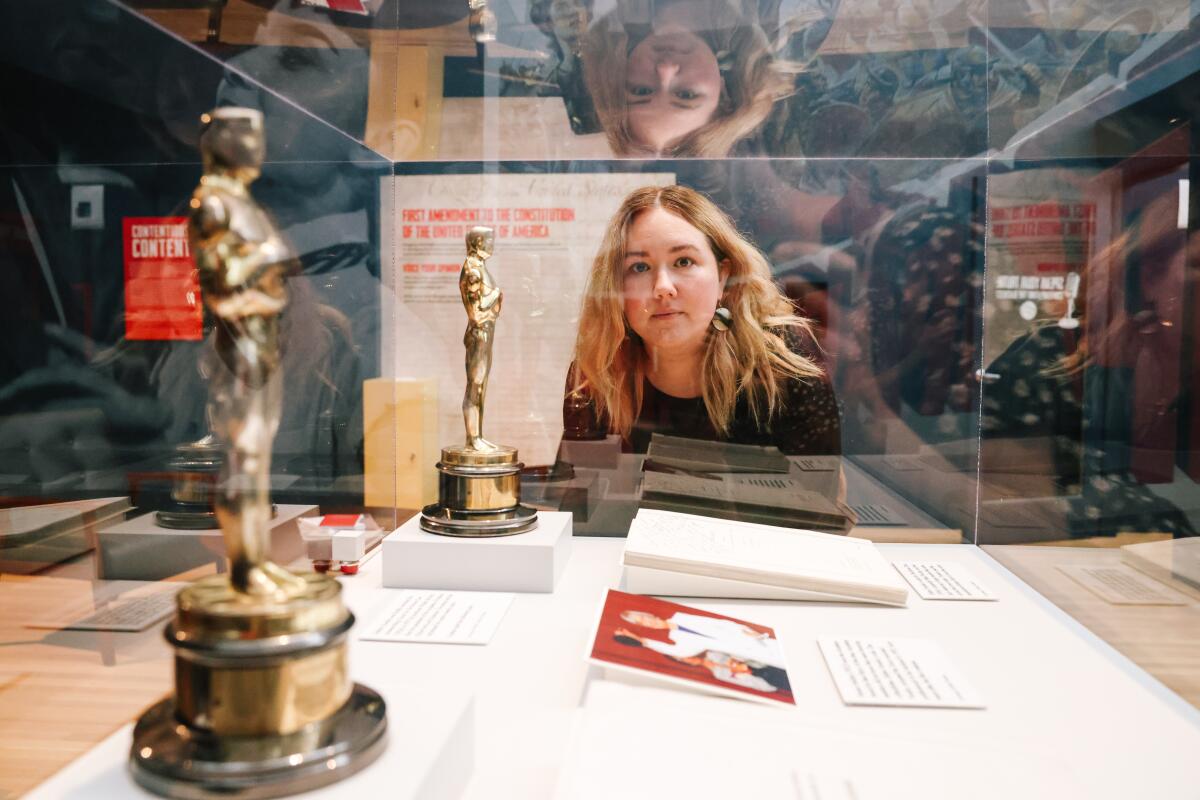
- Share via
For the Skirball Cultural Center’s Cate Thurston, serving as coordinating curator for the museum’s next big exhibition was deeply personal.
“Blacklist: The Hollywood Red Scare” is about a complex and not-so-proud moment in American history. It was organized by the Jewish Museum Milwaukee in Wisconsin and centers, in part, on the Hollywood Ten, a group of eight screenwriters, one director and one producer who, when testifying before the House Un-American Activities Committee in 1947 about allegations of communist propaganda, refused to answer certain questions and were charged with contempt of Congress and sentenced to one year in jail. It includes more than 100 rarely seen artifacts — scripts, telegrams, Oscar statuettes, film costumes, court documents — that tell the infamous story of the Hollywood blacklist.
Thurston, a third-generation Angeleno who grew up in the San Fernando Valley, has a family connection to the exhibition. Her grandparents were story analysts and screenwriters for RKO Pictures, Paramount Pictures and MGM, among other studios. Her great uncle Irwin Shaw, a screenwriter and author whose 1948 novel “The Young Lions” was later made into a film starring Marlon Brando, Montgomery Clift and Dean Martin, was blacklisted.
Thurston’s grandparents were then “graylisted — guilty by association,” she says.
When they were no longer able to get work, Thurston’s grandparents sold their beloved Benedict Canyon home, which they’d built more than a decade earlier, and headed north, where they lived in a beach shack in the Ojai area. Her grandfather fished and traded his haul for vegetables and other goods. He and Thurston’s grandmother wrote magazine articles under fake names. Thurston’s mother was 2 years old at the time.
“The exhibition, it hit a lot harder knowing what my grandparents went through,” Thurston says.
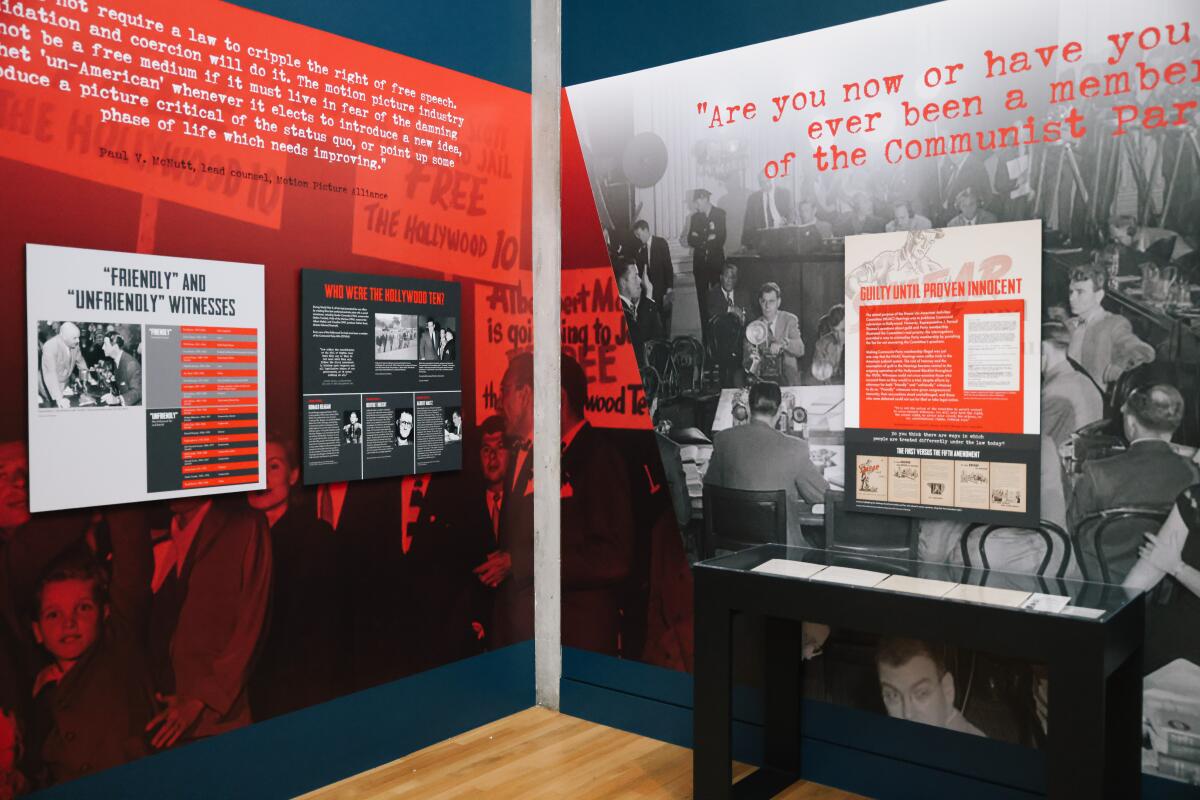
But “Hollywood Red Scare” is personal for all of us, she says. In this era of political division, and considering the rollbacks of civil liberties in this country, the exhibition has urgent contemporary context.
“This is not the first time we, as a country, have dealt with intense factionalization, intense division. This is a theme throughout our history, of having a hard time finding a way to forge across difference ideologically,” Thurston says. “From the rights of the LGBTQIA+ community to questions about cancel culture to questions of security — like what is a reasonable interference into one’s personal life from the government — none of this is new. I think the blacklist is an interesting template to explore this through.”
Museum exhibitions are generally planned several years ahead of time. “Hollywood Red Scare” was not. Skirball director Sheri Bernstein and deputy director Michele Urton saw the exhibition at Baltimore’s Jewish Museum of Maryland in mid-2022 and instantly decided it must travel to Los Angeles, the center of the film industry. It was planned — and significantly expanded — in about 10 months.
Asking questions is central to Jewish tradition, Thurston says, and the Skirball appreciated the way the exhibition had been framed, using the blacklist as a sort of case study to inquire about civil rights and liberty today. But the Skirball wanted a hyper-local exhibition with a larger gallery footprint that was, specifically, more robust in terms of the number of artifacts on view.
“We wanted it to really speak to ‘this is a Los Angeles story,’” Thurston says.
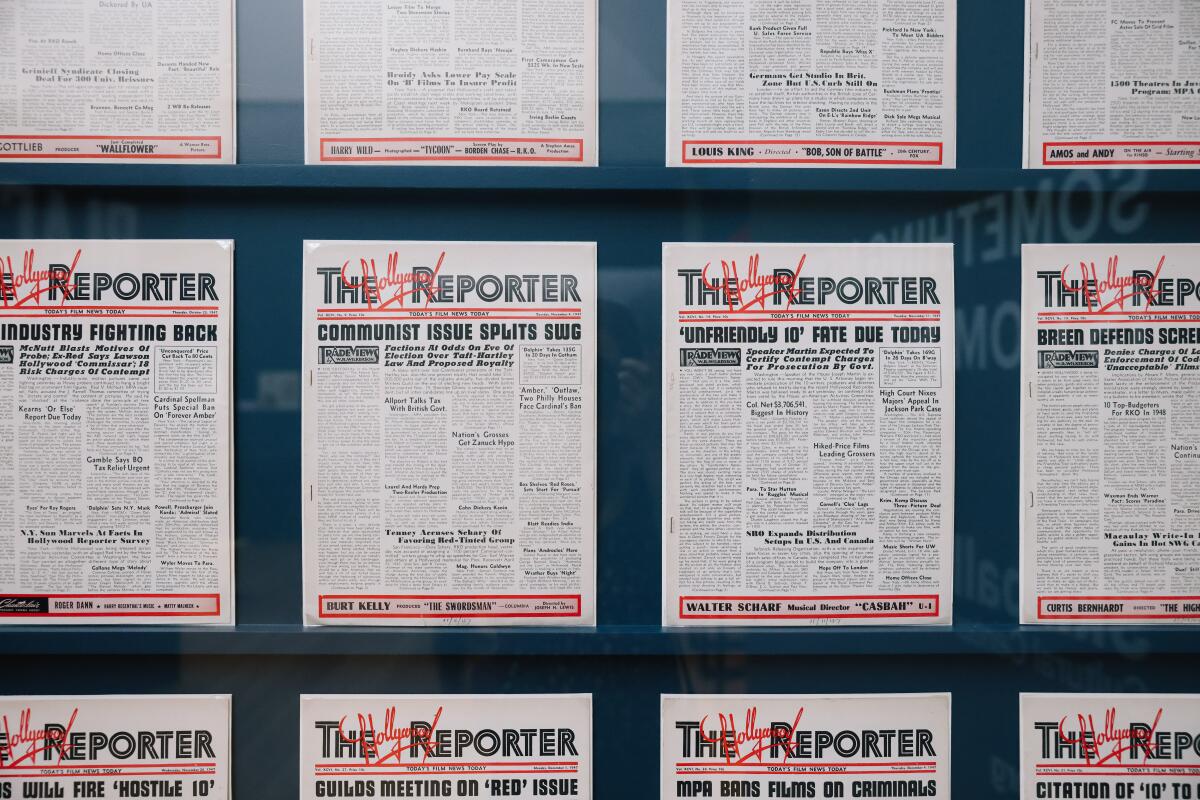
“Hollywood Red Scare” already included items such as letters Hollywood Ten members Dalton Trumbo and Alvah Bessie had sent to their families while incarcerated, as well as newspaper and magazine articles about the blacklist from the time. Thurston and the exhibition’s original curator, Ellie Gettinger, hunted down new objects from institutions and individuals around the U.S. for the expanded L.A. iteration. Much of the exhibition text is original to the show, but about 100 of the 125 artifacts on view are unique to L.A.
The Skirball presentation includes two new sections. One of them, “Hollywood and Anti-Fascism,” explores the lives of the Hollywood Ten before World War II. “Many of them were involved in work that was very patriotic that was part of the war effort,” Thurston says, “and just two years later these actions would be held against them. So we wanted to paint a picture of who they were before the hearings.”
The other new section, “Talented and Targeted,” explores antisemitism and racism at the time, specifically “how the experience of being blacklisted was not monolithic, especially for people who experienced structural inequality already,” Thurston says.
About a third of the new objects on view came from the Wisconsin Center for Film and Theater, which has deep blacklist holdings; about a third came from the archives of the Writers Guild of America West; and a third came from private lenders. Thurston’s team also worked with L.A.’s Academy Museum of Motion Pictures to mine its Margaret Herrick Library at the Academy of Motion Picture Arts and Sciences to dig up high-resolution scans of movie posters from the 1940s and ’50s. They’re now mounted on the wall in the exhibition and are interactive. Visitors can flip open the poster, as if it were the cover of a book, and inside read the FBI’s notes, from the late ‘40s through the ‘50s, analyzing the films for communist themes.
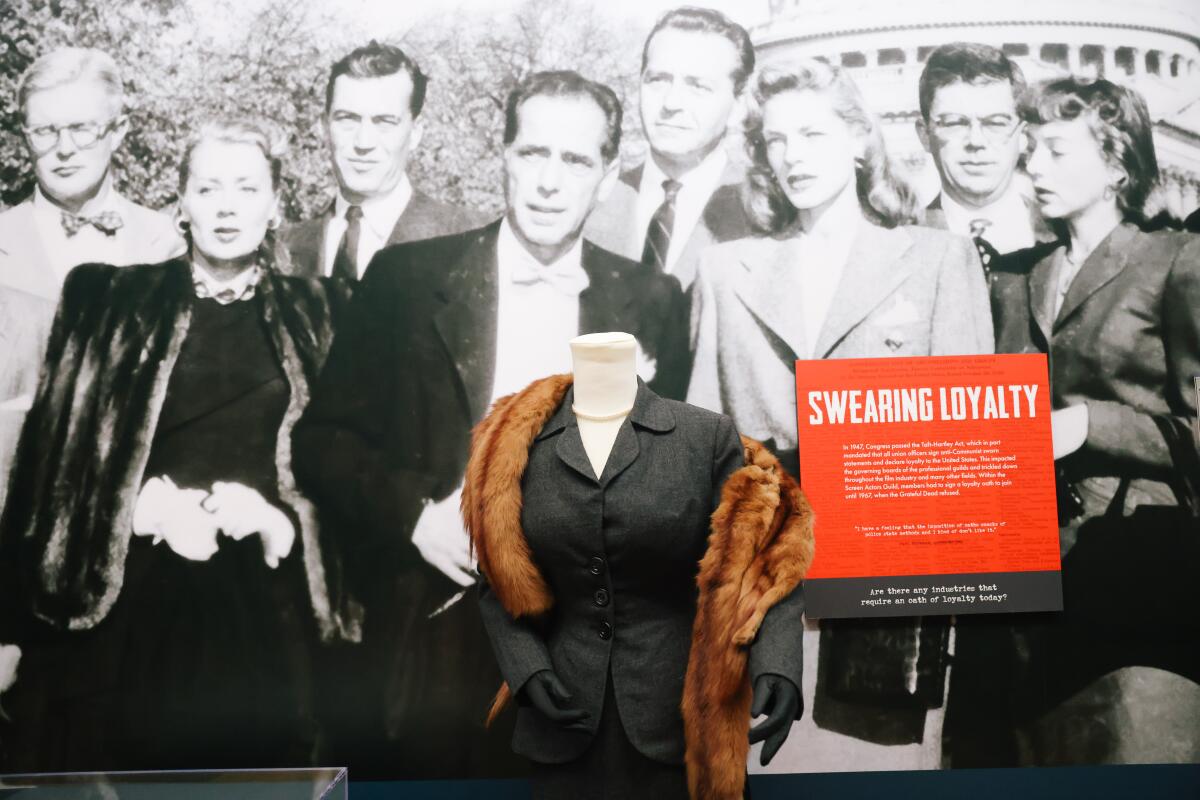
Trumbo’s daughter, Mitzi Trumbo, personally lent some of the objects, including two typewriter ribbon tins that Trumbo used when he was incarcerated to hold his personal belongings. Inside are letters from his children, stamps, a calendar, matches, the end of a cigar holder, a tiny children’s Bible.
“What I found so striking about those artifacts,” Thurston says, “was it conveyed the weight of what they had suffered. It was a way for us to explore his incarceration experience. And it also had so much of Dalton Trumbo’s personality and his sense of humor.”
There are poems from Bessie on view; there’s a pamphlet published by the Committee for the Hollywood Ten, called “For Justice and Peace by the Wives of the Hollywood Ten”; there’s a script, with accompanying audio, for a radio spot supporting the Hollywood Ten created by the Committee for the First Amendment, which was made up of Hollywood A-listers such as Humphrey Bogart, Lauren Bacall, John Huston and others.
Two film series at the museum will spotlight movies by and about blacklisted filmmakers.
“Behind the Blacklist,” organized with film historian Alan K. Rode, is a double-feature series and will include conversations with current Hollywood creatives as well as family members of blacklisted filmmakers.
The museum’s summer Outdoor Movies at the Skirball series, held in its courtyard, will this year feature movies by blacklisted filmmakers and others who testified before HUAC.
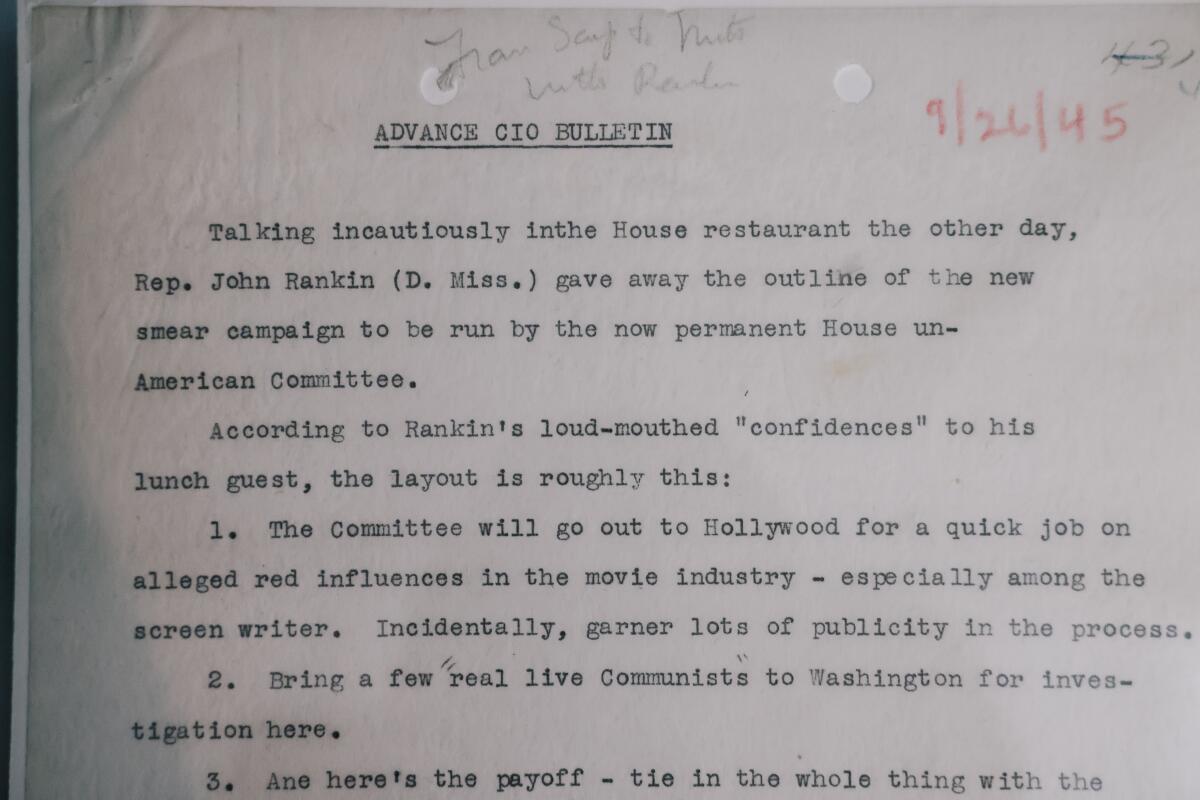
Six of the Hollywood Ten were Jewish, Thurston points out, and several members of HUAC were members of the Ku Klux Klan. Antisemitism, she says, was a theme throughout the Hollywood blacklist and the Skirball hopes that “Hollywood Red Scare” spurs reflection on antisemitism in the U.S. — in the past and present.
“We felt it was really important for our mission and our audience and our values,” she says.
An exhibition addressing freedom of speech — or lack thereof — walks a tricky line, Thurston explains. But that’s one aspect that makes “Hollywood Red Scare” so interesting.
“One of the things I’m excited about, and also cautious about, in talking about the exhibition is: I don’t ever want to tell anyone how to think,” she says. “I want to leave enough nuggets for folks to make opinions about the past and present for themselves. And I think this exhibition does a really good job of that.”
“Blacklist: The Hollywood Red Scare”
Where: Skirball Cultural Center, 2701 N. Sepulveda Blvd., L.A.
When: May 4 - September 3, 2023. Tues.-Fri., 12-5 p.m.; Sat.-Sun., 10 a.m.-5 p.m.
Cost: Adult general admission for non-members: $18
Info: skirball.org
More to Read
The biggest entertainment stories
Get our big stories about Hollywood, film, television, music, arts, culture and more right in your inbox as soon as they publish.
You may occasionally receive promotional content from the Los Angeles Times.

